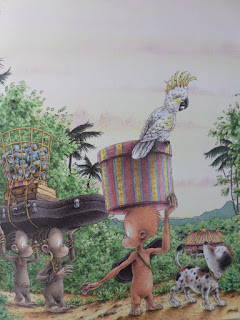All right, this is an old one. Still offered to children though. A French classic, ha ha. So sick of it.
My daughter likes white-of-course-princesses so much that she finds it really hard to accept that I do not want her to bring home this book from her class library for the second time.
You have this bunch of kids around Martine (this pearl of French kiddie lit). They’re friends. They’re white. They have names. They decide to set up a play. Martine-centre-of-the-universe plays the white-of-course-princess. Her fair prince is as fair as possibly imaginable and obviously dressed in blue. All the other friends play secondary roles. And, surprise surprise, out of the blue there is one more. Whoever that is? The page of course. The Black-of-course-page attending to the needs of the white-of-course-prince. The page who appears on a single page (but who is significantly placed on the cover). The page who does not have a name. Does not need one. And if he had one, one can guess it would be Jim.
I don’t have much more to say on racism in children’s books. I would just like to place a blurb next to the Black kid on this book cover. A blurb saying: Nobody knows my name.
It is a title from Baldwin. I often have titles from Baldwin floating in my mind when encountering racism. The most recurrent one is not this one, however. The most recurrent one is a mantra I use to calm myself down and gain confidence in the future.
Enough for now. The fire next time.





